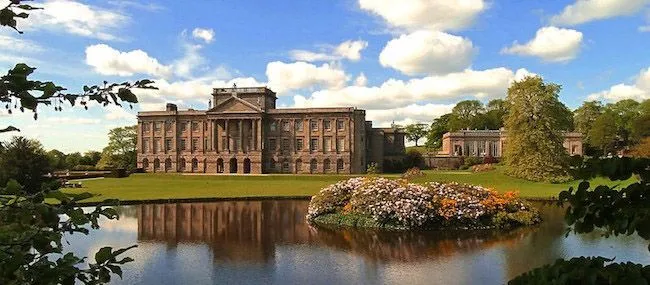FOR ALL AGES
The country’s great buildings are beginning to open again, as lockdown restrictions are eased. Many are looked after by English Heritage and the National Trust. Now, more than ever, those organisations could use a membership boost to help safeguard Britain’s heritage. Both offer hundreds of exciting days out for families. If you can only join one, which should it be?
On the face of it, English Heritage and the National Trust appear to do very similar things. They both look after historic buildings and locations, and open them up to the paying public. We can list out the key stats a bit like a game of Top Trumps:
Number Of Sites
English Heritage: >400
National Trust: >500 plus about 1,000 square miles of land
Note: Not all have yet reopened following coronavirus lockdown (Aug 2020).
Year Founded
English Heritage: 1983 or 2015 (the former was when the name came into use as a government agency; the latter when it became a charity)
National Trust: 1895
Most Famous Sites
English Heritage: Stonehenge, Dover Castle, Hadrian’s Wall
National Trust: Giant’s Causeway, Cliveden, Fountains Abbey
Membership
English Heritage: 1.04 million (2019)
National Trust: 5.6 million (2019)
The two organisations also have differences in character. As a rule of thumb, English Heritage mostly deals with truly ancient places -- castles, fortifications, monuments and the like -- while the National Trust’s building portfolio brims with stately homes. If it’s got furniture inside, it’s probably NT. If it’s got no roof, it’s likely to be EH.
These are, of course, stonking generalisations. Charles Darwin’s home in South-east London, for example, is furnished much as he left it, but is claimed by English Heritage. Fountains Abbey in Yorkshire, meanwhile, is a crumbling abbey that has absolutely no roof, but is part of the National Trust.
The National Trust also plays a stronger role in safeguarding areas of natural beauty (that may or may not have historical significance). It is the largest private landowner in the country looking after, for example, 780 miles of coastline and much of the Lake District.
Another key difference is that English Heritage looks after places only in England, whereas the National Trust also encompasses Wales and Northern Ireland. Scotland has its own independent National Trust for Scotland.

Lyme House, Cheshire. National Trust
English Heritage: Individual membership £63; two-parent family membership £109; one-parent family membership £63
National Trust: Individual membership £72; two-parent family membership £126; one-parent family membership £78
The slightly cheaper cost of English Heritage reflects its smaller number of paid-for sites.
Prices accurate at the time of writing (mid-August 2020). Family memberships allow up to two adults and 12 children.
Membership of both organisations includes unlimited entry to all properties, free parking (where a charge would otherwise apply) and free or reduced entry to special events. You’ll also get a members’ magazine. EH members also get access to a Rewards Scheme, which gives money off on partner experiences and products.

Fountains Abbey in Yorkshire, National Trust. Image by author
There’s not a huge deal to separate the pair from a parent’s point of view. English Heritage will probably shade it if your kids are into castles and crenellations and mysterious ancient stones. Then again, the National Trust has all those acres of parkland and coast to explore, while it’s stately homes all put on child-friendly activities. English Heritage may be a little cheaper, but the difference is tiny in the grand scheme of things.
Your best tactic might be to look at maps of the historic sites looked after by the two organisations. Take into account which has the most to offer in your local area, or the parts of the country you are most likely to visit. The websites of both organisations will show you a list and map of the closest sites to your postcode.
Whichever you decide, you’re sure to unlock many family adventures you wouldn’t otherwise have experienced.
See also our recommendations of National Trust days out and English Heritage days out.
Read The Disclaimer
At Kidadl we pride ourselves on offering families original ideas to make the most of time spent together at home or out and about, wherever you are in the world. We strive to recommend the very best things that are suggested by our community and are things we would do ourselves - our aim is to be the trusted friend to parents.
We try our very best, but cannot guarantee perfection. We will always aim to give you accurate information at the date of publication - however, information does change, so it’s important you do your own research, double-check and make the decision that is right for your family.
Kidadl provides inspiration to entertain and educate your children. We recognise that not all activities and ideas are appropriate and suitable for all children and families or in all circumstances. Our recommended activities are based on age but these are a guide. We recommend that these ideas are used as inspiration, that ideas are undertaken with appropriate adult supervision, and that each adult uses their own discretion and knowledge of their children to consider the safety and suitability.
Kidadl cannot accept liability for the execution of these ideas, and parental supervision is advised at all times, as safety is paramount. Anyone using the information provided by Kidadl does so at their own risk and we can not accept liability if things go wrong.
Kidadl is independent and to make our service free to you the reader we are supported by advertising.
We hope you love our recommendations for products and services! What we suggest is selected independently by the Kidadl team. If you purchase using the buy now button we may earn a small commission. This does not influence our choices. Please note: prices are correct and items are available at the time the article was published.
Kidadl has a number of affiliate partners that we work with including Amazon. Please note that Kidadl is a participant in the Amazon Services LLC Associates Program, an affiliate advertising program designed to provide a means for sites to earn advertising fees by advertising and linking to amazon.
We also link to other websites, but are not responsible for their content.
Was this article helpful?



We’ll send you tons of inspiration to help you find a hidden gem in your local area or plan a big day out.



Check your inbox for your latest news from us. You have subscribed to:
Remember that you can always manage your preferences or unsubscribe through the link at the foot of each newsletter.